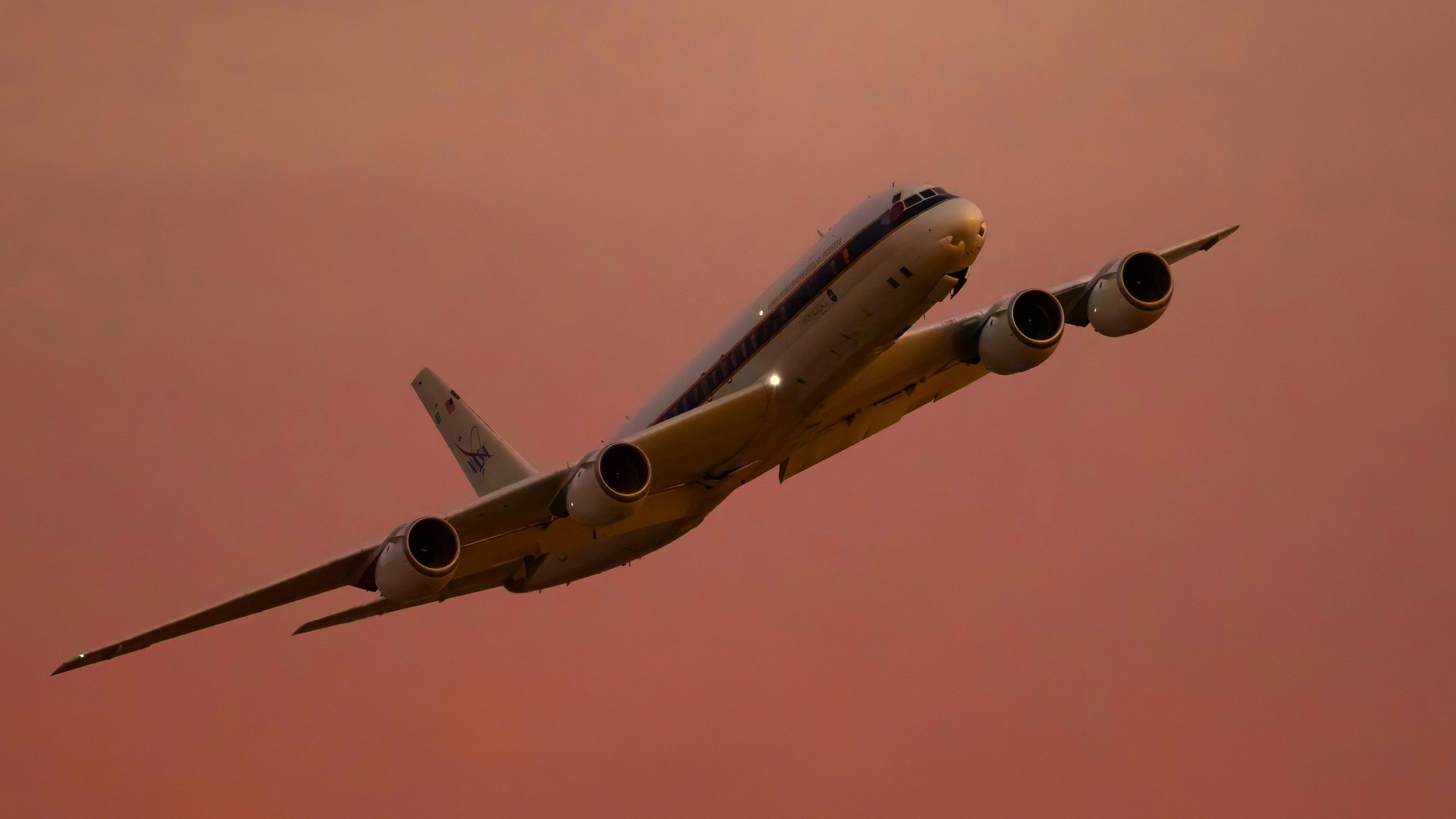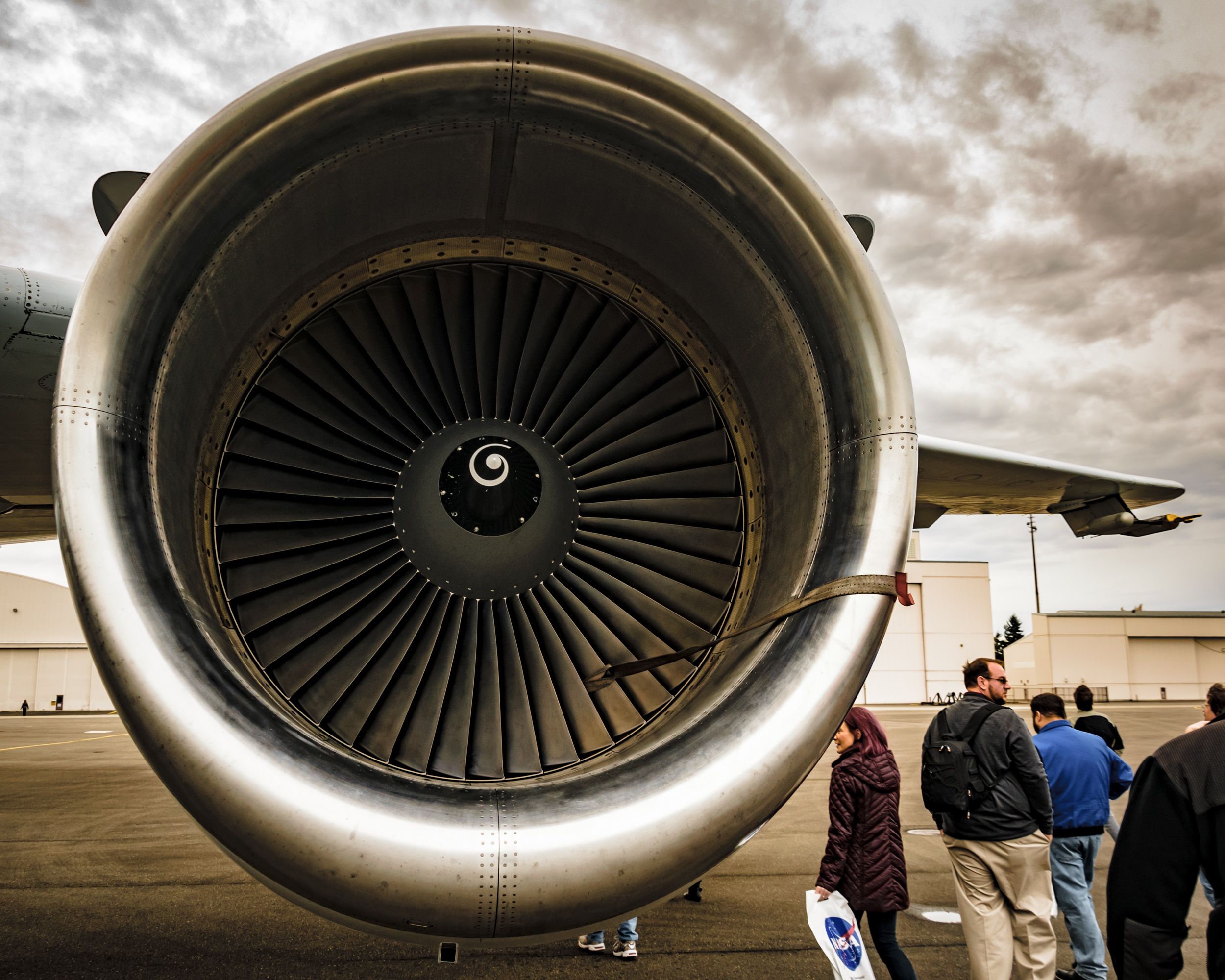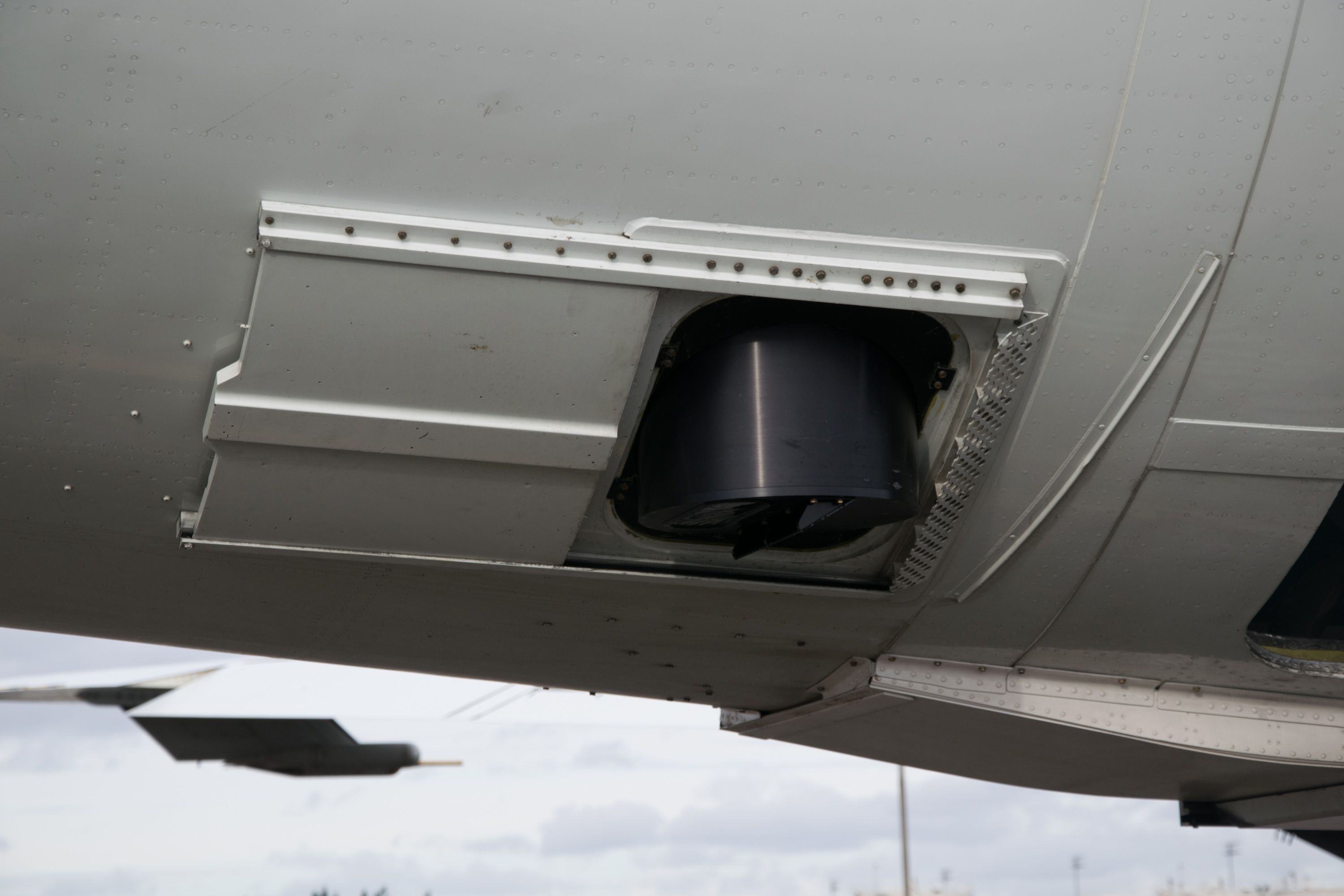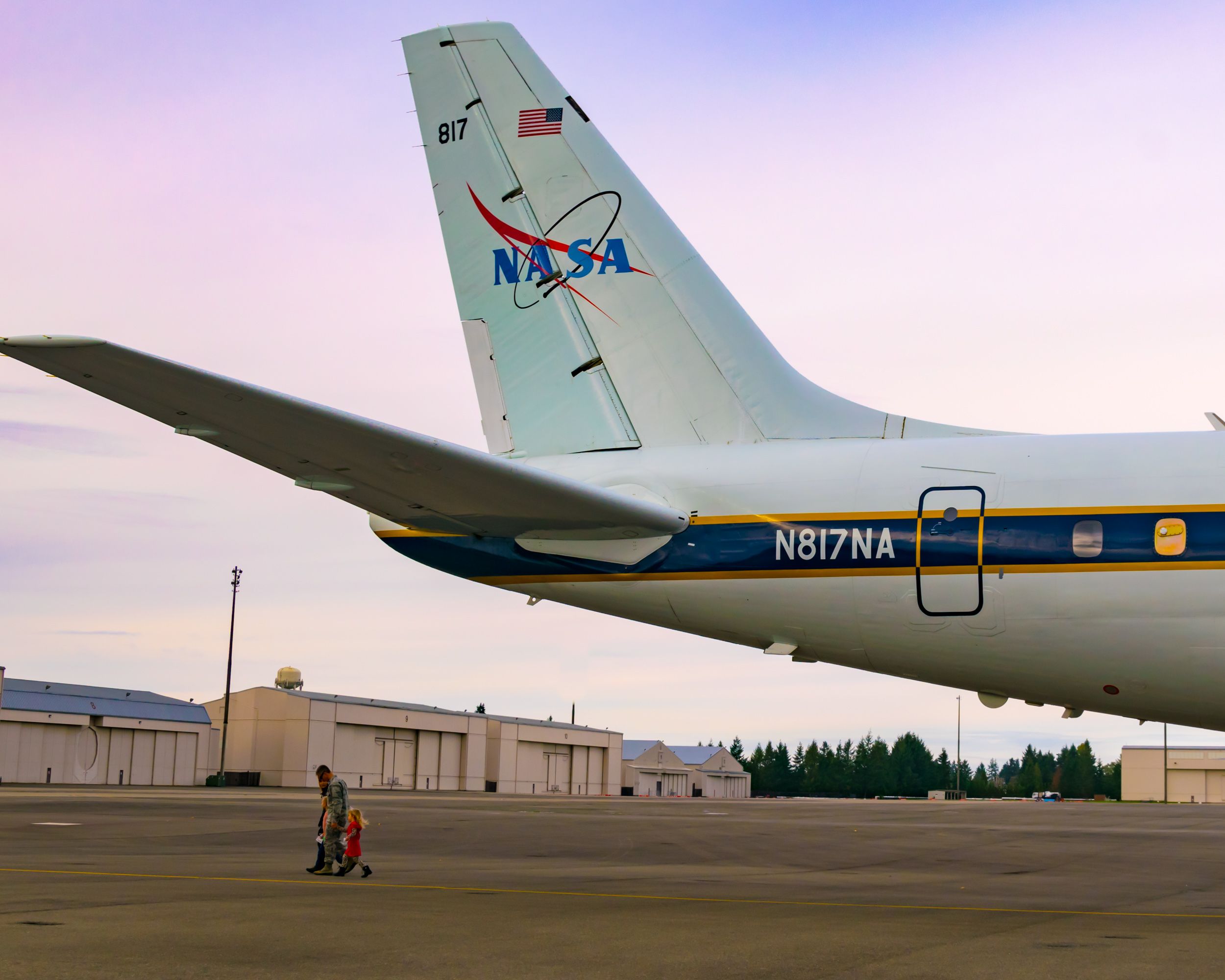Summary
- NASA’s DC-8, a flying science aircraft, has performed many science missions.
- The DC-8 was used for sensor development, satellite verification and research studies.
- The DC-8 will be replaced by the Boeing 777 after 37 years of service to atmospheric science.
All good aircraft must eventually be retired or repurposed. Such is the case with NASA’s Airborne Science Douglas DC-8-72, which was built in 1969 and has flown atmospheric science missions since representing aeronautics at the National Aeronautics and Space Administration.
The Douglas DC-8 has been used for many scientific missions
According to a NASA fact sheet, NASA’s DC-8 is well-equipped and extremely useful in science projects.
“The data collected by the aircraft at flying height and by remote sensing have been used for studies in the fields of archaeology, ecology, geography, hydrology, meteorology, oceanography, volcanology, atmospheric chemistry, cryosphere science, soil science and biology. Four types of missions are carried out with the DC-8: sensor development, satellite sensor verification, retrieval of telemetry data for launch or reentry of the spacecraft, and optical tracking and other research studies of the Earth’s surface and atmosphere.”
For example, the DC-8 has served as a platform for many projects. It helps that the DC-8 has a range of 5,400 nautical miles and 12 hours with the ability to fly at altitudes ranging from 1,000 to 42,000 feet. Additionally, the DC-8 was re-engined with CFM56-2 high bypass turbofans as shown below – and is also used in the Boeing KC-135R Stratotanker, Boeing 737 Next Generation, other Douglas DC-8s and even the Airbus A320 and A340s.
Photo: Joe Kunzler | AvgeekJoe Productions
Some of these projects where the DC-8 was used were to test affordable satellite sensors. Or to check satellite sensors. As shown in the photo below, MASC: a CubeSat Microwave Atmospheric Sounder was mounted on a DC-8 for the 2015-2017 OLYMPEX flight tests to verify and validate the satellite measurement of precipitation from the constellation of satellites known as the Global Measurement of rainfall (GPM). .
Photo: Joe Kunzler | AvgeekJoe Productions
OLYMPEX, according to the project’s webpage, was “a ground-based field validation campaign designed to verify and validate satellite and aircraft precipitation measurements from the constellation of satellites known as the Global Precipitation Measurement.” The program was operated over the Olympic Mountains of Washington State and the Pacific Ocean, and involved the use of landers, or lander sensors, to measure the atmosphere. The author in 2015 was able to participate in the “NASA Social” with the participation of the team, hence the photos below:
Another project was the Convective Processes – Aerosols and Winds (CPEX-AW) experiment to calibrate a satellite using Lidar to measure atmospheric winds. CPEX-AW was the first DC-8 project after the 2020-2021 depot maintenance period.
NASA also used its DC-8 in a 2019 joint venture between NOAA and NASA called Fire Impacts on Regional to Global Environment and Air Quality (FIREX-AQ). FIREX-AQ uses the DC-8 to mount many pieces of equipment to detect smoke content, smoke range, temperatures and winds. This work was intended to help predict the spread of smoke, how chemical transformations change the composition of smoke, and to help calibrate the satellites — for starters.
The fact that the DC-8 is made of steel and aluminum makes it easier to mount tools on the airframe compared to, say, the composite Boeing 787.
But the DC-8 will be replaced by the Boeing 777
However, the circa 1969 DC-8 is showing its age. As such, a 21-year-old Japan Air Lines Boeing 777-200ER, which was JA704J and was cooling its heels in long-term storage at Victorville, California, was hired as its replacement and re-registered as N774LG. Given that Boeing bought McDonnell Douglas in 1997, it seems fitting – and the new 777 will have significantly more capacity and range than its atmospheric science predecessor.
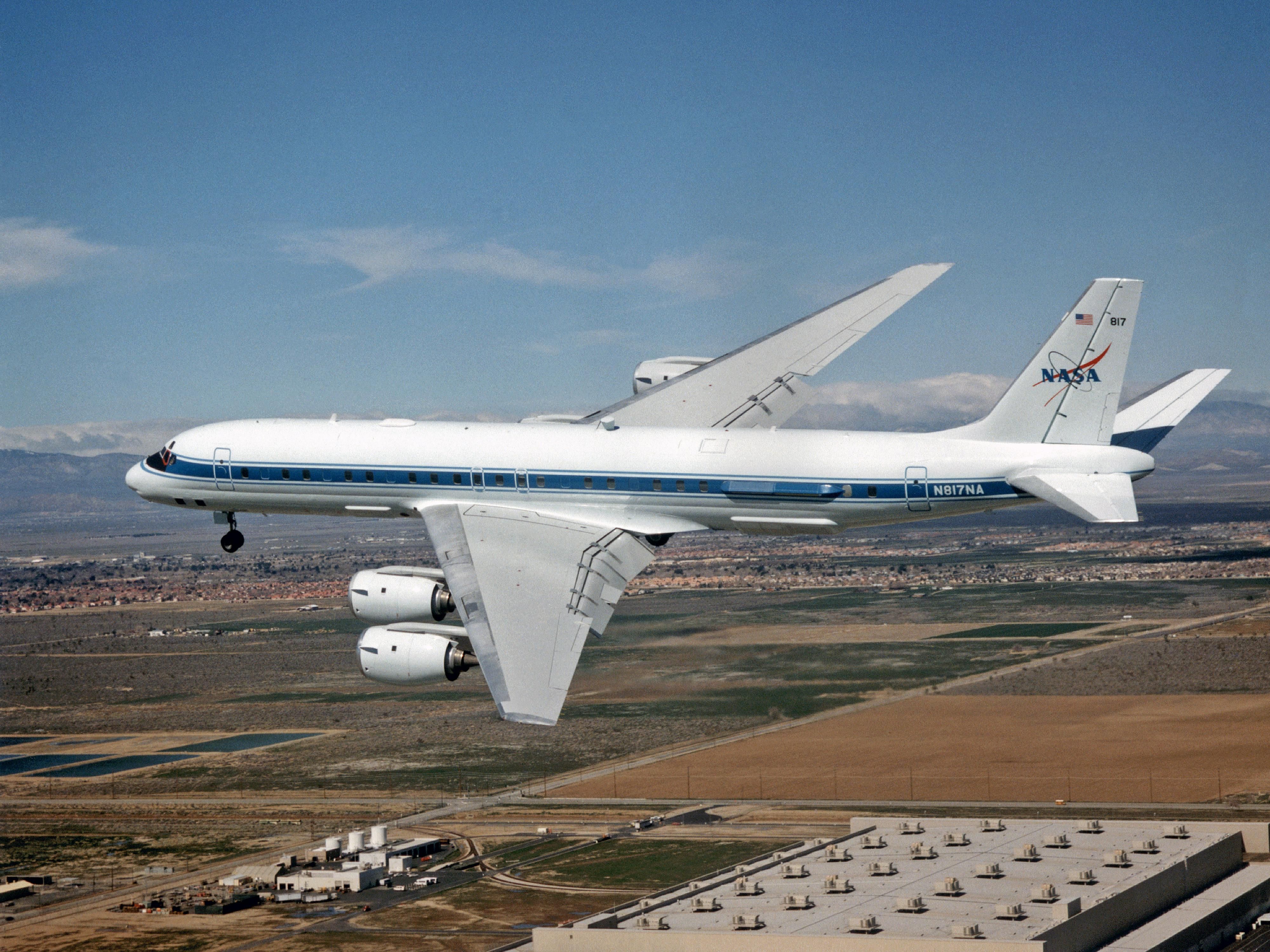
NASA is replacing its aging DC-8 with a Boeing 777
It’s time for the almost 54-year-old quad jet to go down.
In November 2023, Japan Air Lines completed the sale of the Boeing 777-200ER. Hence the easy availability of Boeing 777s to redeploy for atmospheric research.
The new 777-200ER will take time to transition from a passenger transport to an aeronautical research platform. However, NASA saves taxpayers significant money by using a used aircraft to continue its vital aeronautical research.
Repurposed to teach aircraft maintenance
However, NASA’s DC-8 will not be parked in the Arizona desert like many US government aircraft. Instead, in May 2024, the intention is to gift the DC-8 with the advanced CFM56-2 turbofans to Idaho State University’s Aircraft Maintenance Technology Program.
The program trains students to work on hulls and engines and has two and 4+ year study options. The training combines textbooks and tactile learning to prepare students for a high-demand field.
Bottom row
The Douglas DC-8 that served NASA will be repurposed from an air lab to an aircraft mechanic classroom. NASA’s Douglas DC-8 will be replaced by a Boeing 777 to continue exploring Earth’s atmosphere and calibrating satellites.
Photo: Joe Kunzler | AvgeekJoe Productions
As the sun sets on the DC-8 in NASA service, one should cite the 2021 Final Report of the National Academies of Sciences, Engineering, and Medicine Committee on the Future Use of NASA’s Airborne Platforms to Advance Earth Science Priorities. “Airborne Platforms to Advance NASA’s Earth System Science Priorities: Assessing the Future Need for Large Aircraft”
“Several characteristics and combinations of characteristics of the DC-8 have led and will continue to lead to the need for a large aircraft.” The ability to reach remote locations such as Antarctica and the southern oceans is one. Others are the need for multiple, simultaneous, co-located measurements in the atmosphere. The need arises from the temporal and spatial variability that exists over a wide range of scales for atmospheric processes and parameters. Only with multiple measurements co-located on the same mobile platform can key atmospheric processes be adequately investigated, diagnosed and verified.
The report prompted NASA to acquire the Boeing 777. In honor of Douglas DC-8 N817NA, NASA is issuing a call for papers through April 15 for an August 21-22 workshop on the DC-8’s contribution to Earth Systems Science at NASA.
What are your conclusions? Please share in the comments.

